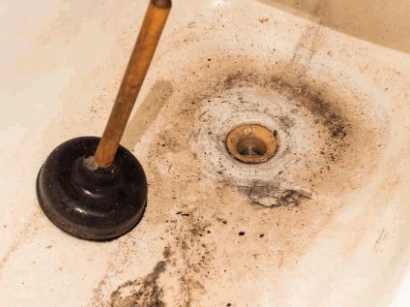We've come across this post about How To Use Your Toilet Plunger Correctly in 5 Easy Steps listed below on the net and accepted it made good sense to talk about it with you on this site.

Introduction
Proper maintenance of home drains is vital for protecting against obstructions and making sure smooth water circulation. Among the key devices in every home owner's toolkit is the bettor, along with numerous drainpipe cleaners designed to tackle stubborn clogs effectively. This write-up discovers exactly how to use bettors and drain cleansers successfully to keep your drains pipes streaming freely.
Section 1: Comprehending Plungers
Sorts of Plungers
There are numerous types of plungers available, each designed for various sorts of drains pipes and blocks. One of the most common types consist of mug plungers, flange bettors, and accordion plungers.
How Plungers Work
Bettors work on the principle of creating pressure and suction to displace obstructions. When effectively used over a drainpipe, they create a vacuum cleaner that can pull out debris or separate obstructions.
Selecting the Right Plunger
Choosing the best plunger depends upon the kind of drain and the nature of the obstruction. Cup bettors are excellent for sinks and tubs, while flange bettors are much better suited for commodes due to their layout.
Common Errors with Bettors
Preventing these blunders makes certain efficient plunging: inappropriate seal around the drain, inadequate pressure, and unclear surrounding particles.
Area 2: Making Use Of Plungers Successfully
Preparation
Prior to plunging, guarantee the plunger covers the drain totally and creates a tight seal. Clear any type of noticeable debris around the drain opening.
Method
Beginning with gentle diving activities to build suction. Increase pressure slowly, using a constant rhythm. Repeat as required up until the drain removes.
Troubleshooting Tips
If diving doesn't work, attempt changing the seal, applying petroleum jelly for a much better seal, or making use of a various type of plunger.
Area 3: Understanding Drainpipe Cleaners
Sorts Of Drain Cleansers
Drain pipes cleansers can be chemical or chemical. Chemical cleansers use solid chemicals to liquify blockages, while enzymatic cleansers make use of natural enzymes to break down organic matter.
Just How Drain Cleaning Company Job
Chemical cleaners react with obstructions to liquify them, while enzymatic cleansers break down organic products like hair and oil without damaging pipes.
Safety Considerations
Always put on handwear covers and eye security when using chemical drain cleaners. Ensure appropriate air flow and follow producer directions meticulously.
Eco-Friendly Alternatives
Take into consideration making use of vinegar and cooking soft drink or enzyme-based cleansers for green alternatives that are safer for pipes and the environment.
Area 4: Utilizing Drainpipe Cleaners Successfully
Application Strategies
Pour chemical cleansers straight into the drainpipe opening. Enable them to help the recommended time before purging with warm water. Enzymatic cleansers ought to rest over night.
Precautions
Avoid blending different sorts of cleansers, as this can produce hazardous fumes. Never ever use chemical cleaners combined with a plunger, as splashing can take place.
Taking Care Of Persistent Obstructions
For relentless clogs, consider utilizing a pipes snake or calling a professional plumbing professional to avoid damages to pipelines.
Verdict
Finally, recognizing exactly how to utilize plungers and drainpipe cleaners properly is crucial for keeping healthy plumbing systems. By selecting the right tools and strategies, house owners can deal with minor obstructions and prevent significant pipes problems down the line.
4 DIY Ways to Unclog Drains
Wire Hanger
This age-old technique has been used by many an amateur plumber – to much success. Take any wire hanger, deconstruct its shape and leave a small hook shape on the end. Time to go fishing! Remove the shower or sink drain cover and snake the wire into the drain, wiggling and rotating it as you push it through. Dispose of the gunk that you remove and flush the drain with hot water. Rinse with a pan of boiling water for best results.
Plunger
Creating a suction in your drain can break up clogs caused by hair and soap residue build up. First, make sure you are using the correct type of plunger, one specifically for sinks or tubs. They are typically smaller than regular toilet plungers and often have a shallow suction cup. Regular plungers can work too but we’d recommend cleaning them first and finding a way to create better suction over the drain.
Baking Soda and Vinegar
This technique is a classic – and one of the most popular DIY drain unclog methods. Pour one cup of baking soda and one cup of vinegar down the drain and allow it to work its magic overnight. The next morning, flush the drain with boiling water. Repeat if necessary.
Drain Snake/Hair Clog Tool
If you know your clog is caused primary by hair, a drain snake/hair clog tool might be your best option. These tools can be purchased for under $10 at any hardware store and work well so long as the clog isn’t too deep in the drain.
https://www.callcatons.com/blog/four-diy-ways-to-unclog-drains/
I am very serious about and I hope you liked my blog post. Sharing is nice. You never know, you may very well be doing someone a favor. Thank you for your time. Return soon.
Contact Us Now
Comments on “Discover Plungers and Drain Cleaner Techniques: Expert Guidance”